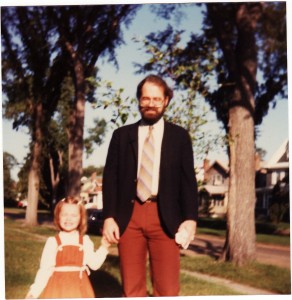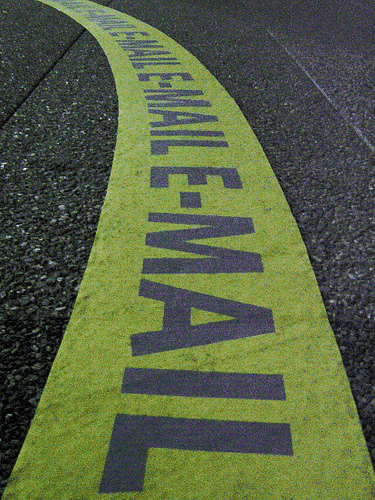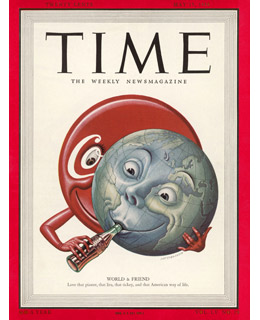
Me & My Dad
From November 24-26 this year, people online (and off) will be taking part in TweetsGiving, a “global celebration that aims to change the world through the power of gratitude.” The way in which people give thanks takes many forms, from tweeting to giving money to attending events in cities around the world.
This is the second year of #Tweetsgiving, and it’s also the second Thanksgiving that I’ve spent without my dad. My dad passed away last year, suddenly, tragically and painfully young. The holidays are often one of the hardest times of year for people who have lost loved ones, their absence made more prominent by the rituals and traditions of the celebrations we used to share.
For much of last year, I retreated from participating in social media. My Twitter account lay dormant. Blog posts unwritten. Facebook status updates blank. It was simply too hard to care.
But starting in November of last year, I slowly began to participate again. Words started to matter. Bigger issues and questions took hold. The greater world beckoned.
I don’t know that this Thanksgiving will necessarily be easier, but it will certainly be better, and I have my community to thank for that.
For those of you I know well in real life, know well online, or even read in passing: thank you for this last year. For pulling me in, engaging me, supporting me and making me care again.
Thank you.

autoroute à emails...by Mzelle Biscotte
Emails and email newsletters are a type of content delivery that sometimes get overlooked in recommendations for reading and staying abreast of current news, what with Twitter, blogs and other social media channels driving an increasing part of the consumption and sharing of news. Why do I *like* getting more emails in my inbox?
- There are some kinds of content I prefer in email form.
- There are some emails that provide content I wouldn’t get or find through Twitter or blogs.
- Well-done emails can function like a good editor, winnowing down the firehose of information into digestible, manageable pieces.
Here are a few recommendations for free emails and email newsletters that I find useful in my regular reading line-up:
Daily
- The 6 AM Cut from FT Alphaville: Current college or graduate students often ask about financial literacy, an area that I think is crucial for communicators of all stripes to understand, at least on a basic level. I get the FT Alphaville email daily from the Financial Times, and it’s a great summary of the top business and finance stories from around the world (although with a heavier weight on U.S. and European stories).
- Today’s Headlines from The New York Times: With a free account, it’s easy to sign up for a selection of the day’s headlines in email newsletter format. I try not to limit my categories too narrowly; I’m not the biggest sports fan, but I still like to get those headlines in the email as a way of keeping on top of various kinds of news. (I also get UrbanEye from the New York Times, a daily cultural email newsletter about topics and events in New York City.)
- Commentz from @PRSarahEvans (with help from @aerocles): A daily email of the “top 5 stories to comment on today.” Wish you had someone that would cull Twitter or your Google Reader for the few stories you really shouldn’t miss each day? That’s essentially what Sarah and David do with Commentz.
Weekly
- Chris Brogan‘s email newsletter, Behind the Scenes. Lots of great insight and tips that you don’t get from his blog.
- Stuart Elliot’s In Advertising weekly newsletter from The New York Times. Here’s a link to the November 16th issue as an example.
Monthly
- KD Paine‘s Measurement Standard newsletter. A wonderful resource on all things measurement-related.
- Spaeth Communications monthly Bimbo Newsletter: The Bimbo Newsletter and top Bimbo Award “recognizes dumb public comments made during the year. The criterion for nomination is that the speaker causes the listener to believe exactly the opposite of what is said. The award is a reminder that repeating negative words only reinforces the negative message as well as misses the opportunity to convey the right message to the reader or listener.” It’s an illuminating and often hilarious round-up of how not to communicate.
- The monthly newsletter from the McKinsey Quarterly, the business journal from McKinsey & Company.
I also get a few other newsletters about New York City or cultural topics, but these are the primary ones I receive and regularly consume for professional purposes. Are there others you find helpful? What am I forgetting?

Coca-Cola Cover of Time, May 15, 1950 (time.com)
I was in Atlanta last week for work (and a little fun), and happened to stay in a hotel across the street from the Georgia Aquarium and the World of Coca-Cola museum. With a little extra time one day, I managed to fit in visits to both.
I’m a reader at museums, so as I was picking my way through the historical information in the various exhibits at the World of Coca-Cola, I came across a cover of Time magazine from the 1950s. There was a note next to the cover, with a little fact stating that the Coca-Cola glass bottle was the “first commercial product” to appear on the cover of the magazine. Time had wanted Robert Woodruff, the charismatic leader of the company for more than 60 years, to appear on the cover, but according to the note at the museum, he declined, saying the company and its product came first.
This fact of history caught my attention because of the way the tensions between corporate and personal brands are being played out online. While the issues are thorny, sometimes (often?) history can be illuminating.
(For more on the subject of personal branding, here are a few blog posts from others I’ve saved on delicious.)


